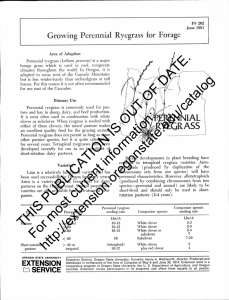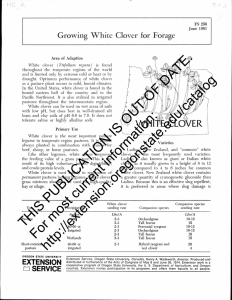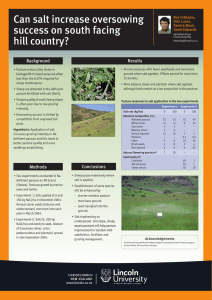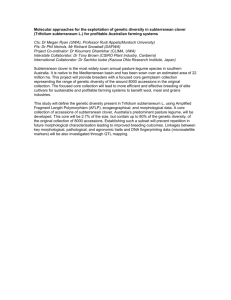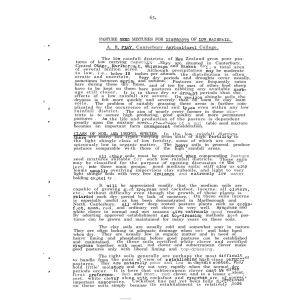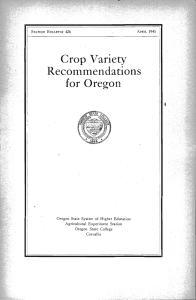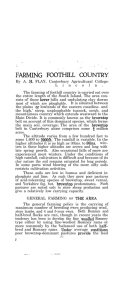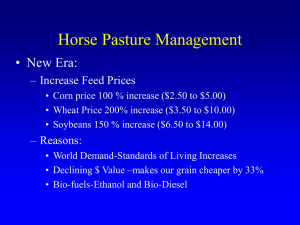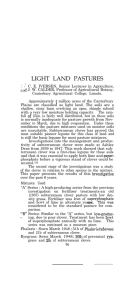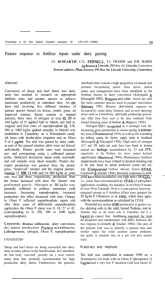DATE. Growing Subterranean Clover for Forage
advertisement
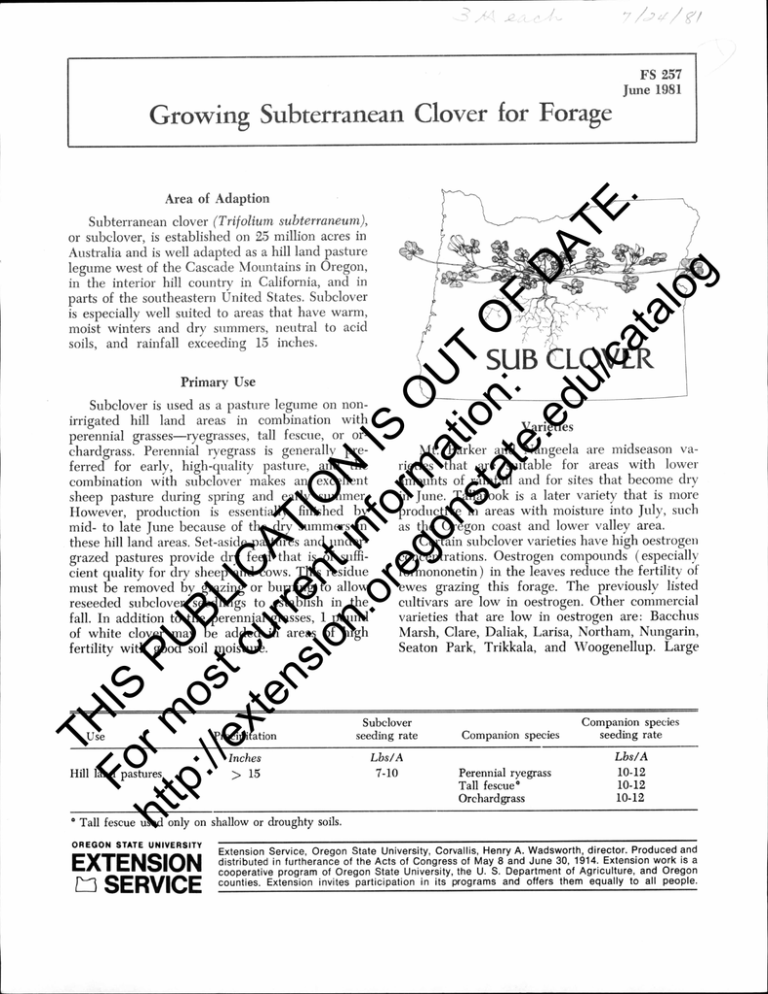
/64 FS 257 June 1981 Growing Subterranean Clover for Forage Fo IS ht r m P U tp o :// s BL ex t c IC te ur A ns re TI io nt ON n. in or fo IS eg rm O on at U st ion T O at : F e. D ed A u/ TE ca . ta lo g Area of Adaption Subterranean clover (Trifolium subterraneum), or subclover, is established on 25 million acres in Australia and is well adapted as a hill land pasture legume west of the Cascade Mountains in Oregon, in the interior hill country in California, and in parts of the southeastern United States. Subclover is especially well suited to areas that have warm, moist winters and dry summers, neutral to acid soils, and rainfall exceeding 15 inches. Primary Use Subclover is used as a pasture legume on nonirrigated hill land areas in combination with perennial grassesryegrasses, tall fescue, or orchardgrass. Perennial ryegrass is generally preferred for early, high-quality pasture, and the combination with subclover makes an excellent sheep pasture during spring and early summer. However, production is essentially finished by mid- to late June because of the dry summers in these hill land areas. Set-aside pastures and under- TH grazed pastures provide dry feed that is of sufficient quality for dry sheep and cows. This residue must be removed by grazing or burning to allow reseeded subclover seedlings to establish in the fall. In addition to the perennial grasses, 1 pound of white clover may be added in areas of high fertility with good soil moisture. Use Hill land pastures Varieties Mt. Barker and Nangeela are midseason va- rieties that are suitable for areas with lower amounts of rainfall and for sites that become dry in June. Tallarook is a later variety that is more productive in areas with moisture into July, such as the Oregon coast and lower valley area. Certain subclover varieties have high oestrogen concentrations. Oestrogen compounds ( especially formononetin ) in the leaves reduce the fertility of ewes grazing this forage. The previously listed cultivars are low in oestrogen. Other commercial varieties that are low in oestrogen are: Bacchus Marsh, Clare, Daliak, Larisa, Northam, Nungarin, Seaton Park, Trikkala, and Woogenellup. Large Subcloyer Precipitation seeding rate Inches Lbs/ A 7-10 > 15 Companion species Perennial ryegrass Tall fescue* Orchard grass Companion species seeding rate Lbs/ A 10-12 10-12 10-12 * Tall fescue used only on shallow or droughty soils. OREGON STATE UNIVERSITY EXTENSION Ei--1 SERVICE Extension Service, Oregon State University, Corvallis, Henry A. Wadsworth, director. Produced and distributed in furtherance of the Acts of Congress of May 8 and June 30, 1914. Extension work is a cooperative program of Oregon State University, the U. S. Department of Agriculture, and Oregon counties, Extension invites participation in its programs and offers them equally to all people. amounts of oestrogen in the forage may be harmful to sheep, but cattle and goats seem unaffected by these oestrogenic compounds. Establishment well inoculated with suitable Rhizobium, no nitro- gen is necessary for a vigorous stand of clover. Specific fertilizer recommendations based upon soil test data are provided in OSU Fertilizer Guides 4 and 63. Management Fo IS ht r m P U tp :// os BL ex t c IC te ur A ns re TI io nt ON n. in or fo IS eg rm O on at U st ion T O at : F e. D ed A u/ TE ca . ta lo g Seed is often aerially applied on burned or cleared land. If planted with a drill, seed should be placed not over inch deep in a well-prepared, weed-free seedbed that is firm below a depth of denum may need to be applied. When seeds are 2 inches. As with all legumes, subclover should be inoculated with a specific Rhizobium bacteria to assure adequate nodulation. Initial working of the seedbed should be done sufficiently early to ensure adequate weed control and facilitate early sowing. The use of herbicides will reduce the period of fallow required. To obtain good establishment, cover seed with a light, trailing harrow or with band sowing attachments. Light rolling is recommended if soil is likely to dry out. Lime pelleting or liming is recommended on highly acid soils ( below pH 5.5). Best results are obtained by sowing in September or early October to get plants established before winter. Fertility and pH Requirements Subterranean clover will tolerate acid soil conditions and medium poor drainage. However, sub- Subterranean clover is an annual legume, and must reseed itself each year to ensure its continued presence in the pasture. In order for reseeding to be successful, residual top growth must be re- moved before the fall rains. This can be achieved by forced grazing or burning. This removal allows the seed that has been buried from this year's crop to germinate and become established in the fall. Low stocking rates will prevent the re-establishment of subclover, resulting in a grassdominant pasture. Increased stocking rates will help prevent weed invasion ( except for various thistles ). In addition, heavier stocking rates reduce the problem of summer forage removal. The best pasture management and animal production are obtained when pastures are grazed intensively. This, combined with adequate fertilization, will result in a high level of production of subclovergrass pastures. William S. McGuire, professor of agronomy, Oregon State phorus and sulfur. If soils are low in pH, molyb- University. TH clover will not survive in standing water or in seepage areas. For highest production of subclover, soils should be well supplied with phos- By David B. Hannaway, Extension agronomist, and
